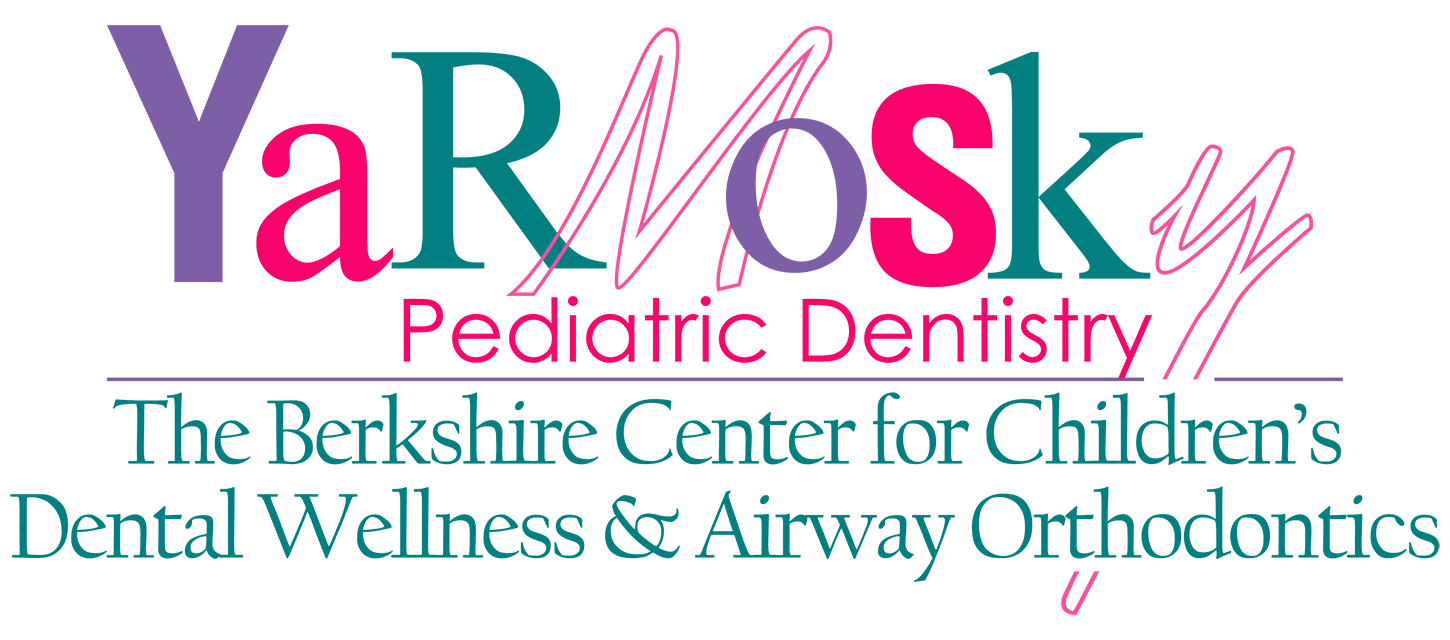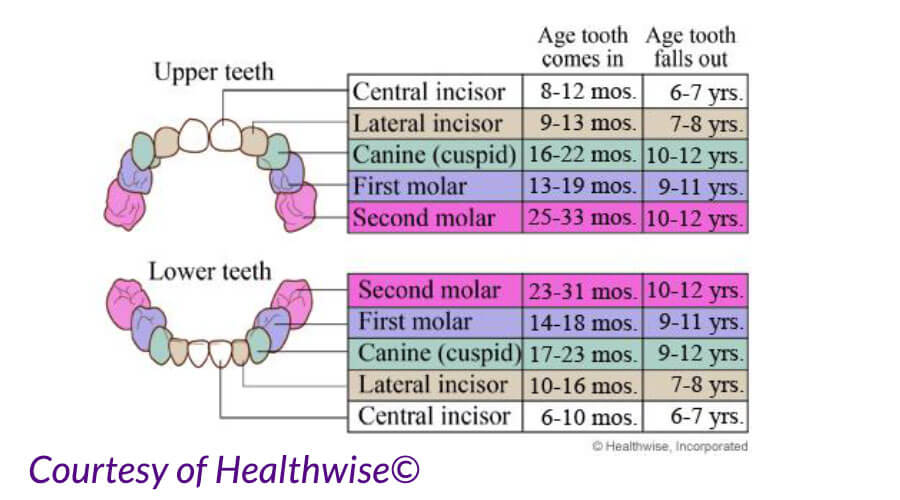Establishing a “Dental Home” for your Child.
Did you know that The American Academy of Pediatrics (AAP), the American Dental Association (ADA), and the American Academy of Pediatric Dentistry (AAPD) all recommend establishing a “Dental Home” for your child by one year of age?
The American Academy of Pediatric Dentists says this about a dental home, “The American Academy of Pediatric Dentistry (AAPD) supports the concept of a dental home for all infants, children, adolescents, and persons with special health care needs. The dental home is inclusive of all aspects of oral health that result from the interaction of the patient, parents, dentists, dental professionals, and non-dental professionals.
Establishment of the dental home is initiated by the identification and interaction of these individuals, resulting in a heightened awareness of all issues impacting the patient’s oral health. This concept is derived from the American Academy of Pediatrics’ (AAP) definition of a medical home which states pediatric primary health care is best delivered or supervised by qualified child health specialists.”
Why?
Children who have a dental home are more likely to receive appropriate preventive and routine oral health care which can improve the quality of life and health in your child. Children that go to the dentist early in life and have routine dental visits, grow up with less dental anxiety and therefore seek-out routine preventative dental care as adults, thereby avoiding more “painful”, complicated or costly dental care.
In fact, the Year One Dental Visit can actually save money. A study in the Journal of Pediatrics showed that children who have their first dental visit before age one will have 40 percent lower dental costs in their first five years than children who do not. The increase in costs can be attributed to due to the cost of dental and medical procedures that may be necessary as a result of poor oral health.
When you expose your child to a fun and welcoming dental environment from the start, with an emphasis on the prevention of dental disease, they will grow up to be healthier children, and eventually healthier adults.
In fact, the Year One Dental Visit can actually save money. A study in the Journal of Pediatrics showed that children who have their first dental visit before age one will have 40 percent lower dental costs in their first five years than children who do not. The increase in costs can be attributed to due to the cost of dental and medical procedures that may be necessary as a result of poor oral health.
Let’s review what to expect at your child’s one year old check up.
1
Infant Exam
An “over-all” and comprehensive look at what is happening with your baby’s tooth development. How do we accomplish this with baby or toddler? We use a “knee to knee” technique that provides maximum comfort to your baby during our examination allowing you to get a “good view” while observing proper brushing and home-care technique.
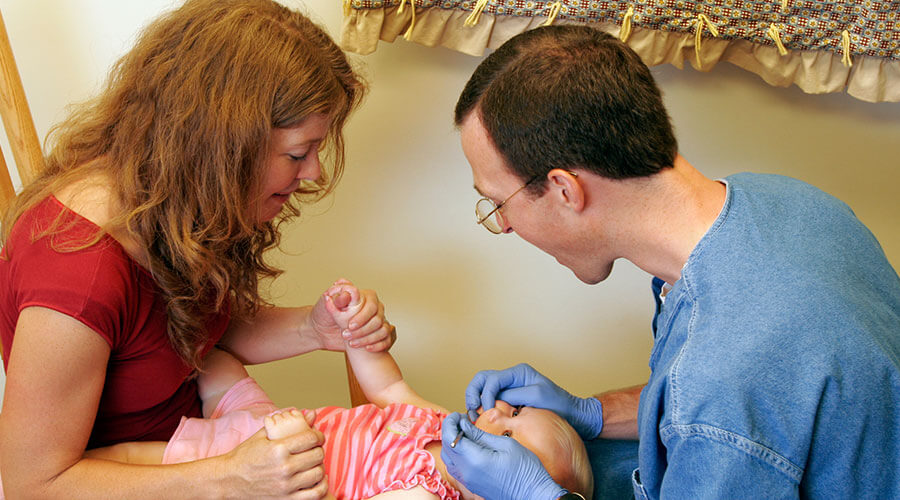
2
Infant Nutritional Counseling
Nutrition is one of the most important aspects in the prevention of dental disease. We discuss feeding practices including breastfeeding, bottle feeding, the appropriate usage of “sippy-cups,” as well as assess the frequency of snacking and drinking in between meals and bedtime routines. We will review “what’s working well” for your family and offer suggestions and strategies in areas that may be more of a struggle.
It is important to understand that as soon as a tooth erupts, it is prone to decay. What you eat, drink and your oral hygiene regimen will determine whether that tooth will develop a cavity of not.
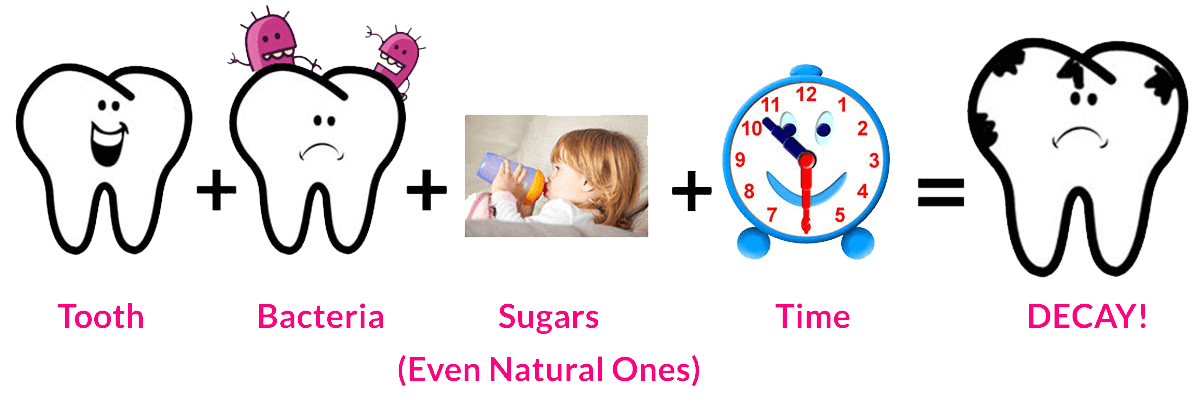
A TOOTH + BACTERIA (dental plaque) ON THE TOOTH + EXPOSURE TO A CARBOHYDRATE (even “natural” sugars) + TIME= DECAY!
IN SUMMARY:
So, as soon as a tooth appears in the mouth, the more frequent the exposure of any carbohydrate (milk, juice, watered-down juice, breast milk, “crackers,” “puffs”) to the teeth throughout the day (and night), the higher the risk of getting a cavity.
An excellent early preventative dietary practice is to follow-up breastfeeding, bottle-feeding, “sippy cup” drinking (with anything that has any kind of sugar in it ) or snacking is to follow up with at least as few sips of water to “rinse-off” any sugars or carbohydrates from the teeth AND to avoid giving your child juice (this includes even watered-down juice), especially in-between meals.
REVISED AMERICAN ACADEMY OF PEDIATRICS (AAP) RECOMMENDATIONS REGARDING JUICE CONSUMPTION (MAY 2017):
Current Recommendations build on the original but takes into further consideration new evidence that has been released since then. In summary we recommend that children don’t drink juice.
RECOMMENDATIONS FOR DAILY INTAKE OF JUICE PRODUCTS:
- Follow with a gulp of water
- Max amount of juice intake per day should not exceed 4 ozs
At Nighttime/Bedtime, when we say “never put your baby to bed with a bottle,” what we mean is this: ideally before your baby goes to sleep, their teeth should be brushed to remove any plaque build-up and the last “thing” to touch your baby’s teeth after brushing is plain water- that is the goal.
HERE ARE A FEW “REAL WORLD” TIPS THAT CAN HELP ACHIEVE THIS GOAL:
3
Infant Evaluation of Oral Hygiene
Brushing your baby’s teeth is not always the easiest task, but it is a very necessary one! (think of it as a “diaper change”: not always easy to do or welcomed by your baby, but always necessary to do!)
The American Academy of Pediatric Dentistry recommends brushing your child’s teeth as soon as the first tooth appears, using a tiny amount (the size of a rice-grain) of fluoride toothpaste every day, usually before bed.
We recommend brushing be done on your lap in a safe place like a couch, bed or the floor where you can position your baby comfortably without the risk of them falling. During your visit, we will show you how to do this to help boost your confidence.
You can also learn more about your role in your child’s dental care by reviewing the section labeled “Role of Parents in Kid’s Oral Hygiene.”
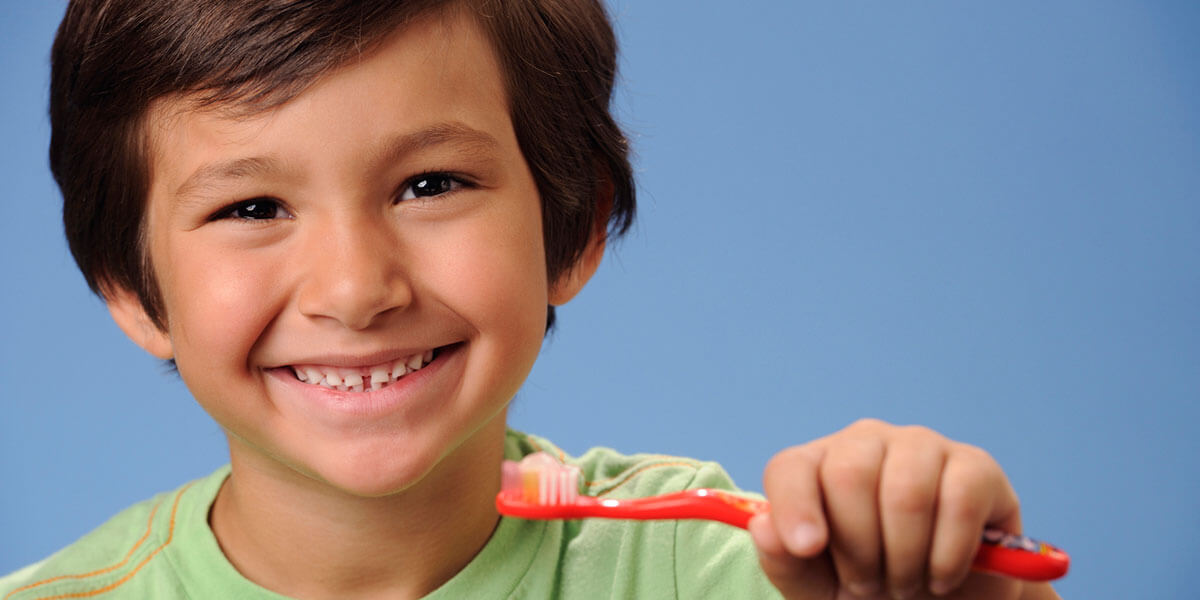
4
Infant Growth and Development Assessment
From proper “teething” patterns, what to expect as your child awaits the eruption of their 20 baby (primary) teeth, evaluating soft-tissue function (the tongue, lips and cheek muscles) and the development of the jaws and facial-skeletal structures, we help you best understand your child’s growth patterns now and in the future.
